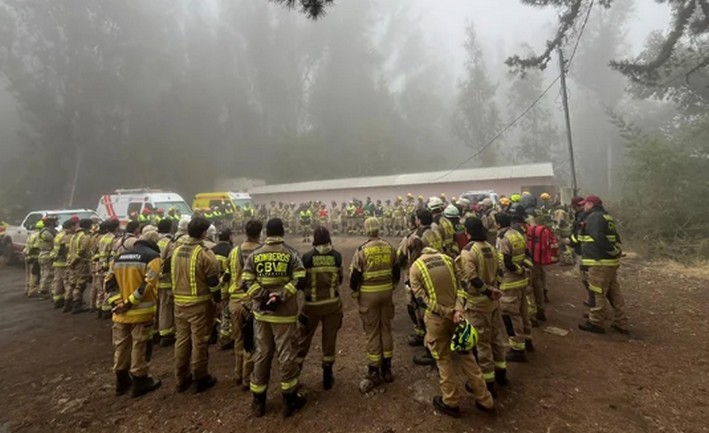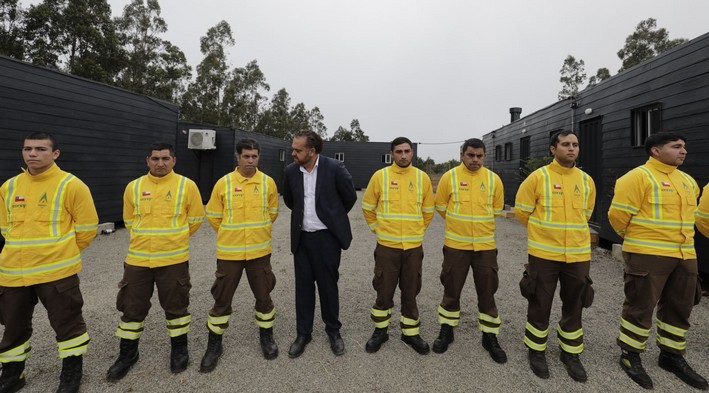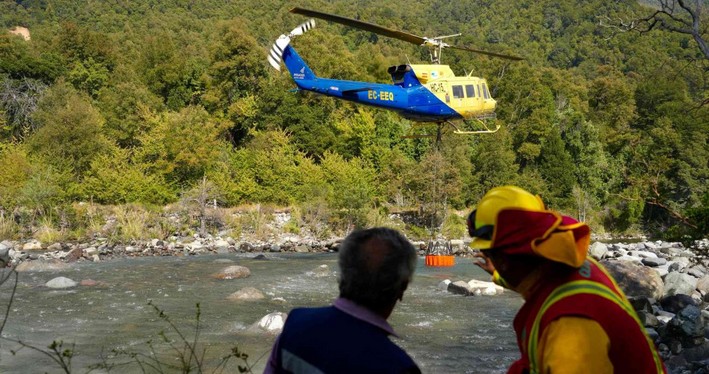Ñuble to Have 11.9% More Firebreaks for the Wildfire Season
The process began last Friday with the implementation of firebreaks in the Monterrico and Don Ambrosio sectors in Chillán. A total of 3,775 km of firebreaks will be built across the country, 414 km more than the previous year.
The National Forestry Corporation (Conaf) of Ñuble has started implementing firebreaks in the communes most at risk of being affected by wildfires this season.
For the 2024-2025 period, the plan includes the construction of 352.5 kilometers of firebreaks throughout the region, representing an 11.9% increase compared to last season.
The process began last Friday with the implementation of firebreaks in the Monterrico and Don Ambrosio sectors in Chillán. Both areas have a high population density and border lands with irregular and unmanaged vegetation.
These fire containment zones, consisting of strips of land cleared of vegetation, aim to create natural barriers to prevent the spread of fires, protecting both the population and ecosystems.
Undersecretary of Agriculture, Ignacia Fernández, led the launch of these firebreaks in Ñuble. The official reiterated the importance of prevention, emphasizing that "99.7% of wildfires are caused by human activity."
"In recent months, we have been working closely with educational communities, neighborhood associations, and various organizations. But we must also prepare by reducing the conditions and likelihood of these fires occurring," added Fernández.
The initiative is part of a national wildfire prevention and management plan. A total of 3,775 km of firebreaks will be built across the country, 414 km more than the previous year.
Ñuble ranks fifth nationally in the implementation of these firebreaks, surpassed only by O’Higgins (769.1 km), Metropolitan (668.4 km), Biobío (670.1 km), and Maule (389.2 km).
Prioritized Zones
Every season, Conaf develops a detailed plan to focus the construction of firebreaks in the highest-risk areas.
Regional Director of Conaf, Juan Salvador Ramírez, explained: "We conduct a commune-by-commune assessment to identify the most critical and vulnerable points that pose risks to the public."
"These efforts are carried out in all 21 communes of Ñuble, along main routes with high wildfire occurrence and vehicle traffic, as well as near rural schools and clinics. They also target interface zones with many homes near vegetation," added the director.
Ramírez noted that some selection criteria are technical. "This corresponds to areas with the highest hazard levels, frequent wildfires, and heavy traffic. However, many additional kilometers of firebreaks are built preventively."
Regarding equipment, the director added, "The teams working on these projects use heavy machinery like skidders, backhoes, industrial mowers, and bulldozers. They are supported by brigades and CONAF Employment Program personnel who reduce vegetative fuel near schools and clinics."
"Work began in early November with the reduction of combustible vegetation, despite ongoing rains delaying some clearing. Regional firebreak construction will conclude in December," he detailed.
Source:La Discusión

















